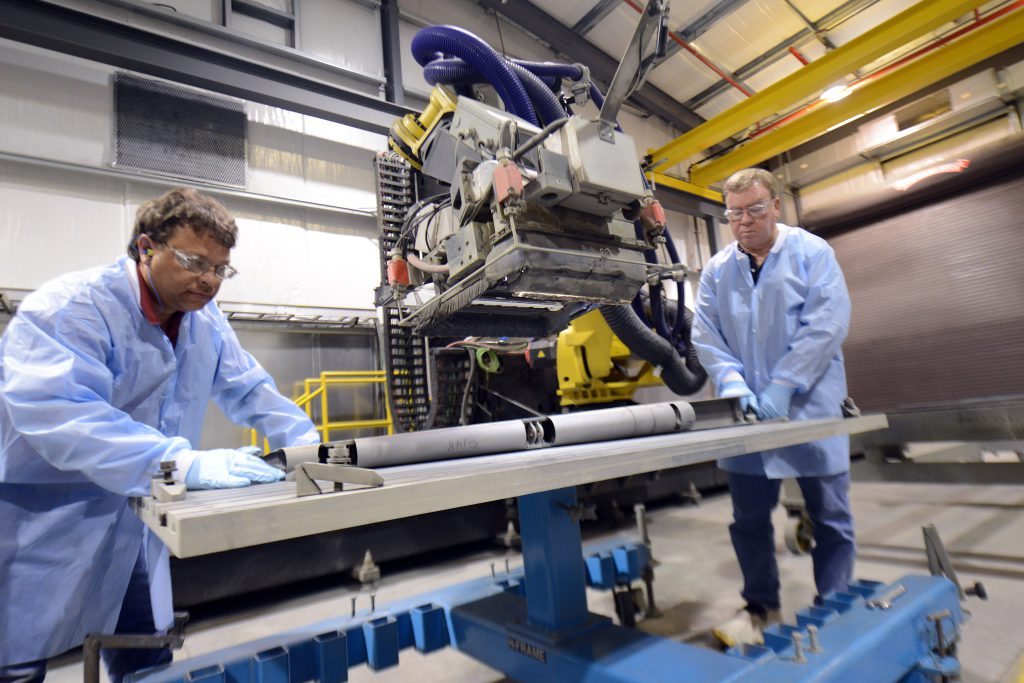
Automation offers opportunities to enhance the workforce rather than eliminate it.
Automation often takes the blame for lost manufacturing jobs when automation might be a key component in revitalizing manufacturing! We know years of trade imbalances and competition with China have contributed to the large-scale job loss of manufacturing in addition to a 2018 study conducted by W.E. Upjohn Institute Vice President and Director of Research Susan N. Houseman.
Debunking the Myth “Automation Causes Job Unemployment”
Houseman's research reveals how manufacturing has suffered when a sub-sector of manufacturing, the computer industry, was factored out of the research… though not due to automation as widely believed.
The strength of real manufacturing output is nearly dominated by computer and electronic products. The study found manufacturing’s real GDP growth was 63 percent of the average private sector from 2000-2016. When the numbers from the computer industry was dropped from the data, manufacturing’s real GDP growth was only 12 percent of the average private sector, which reveals obvious disparities in manufacturing industries and suggests automation is not the cause of manufacturing job loss.
Houseman encourages economists to not dismiss trade and the role it has had in manufacturing jobs, productivity and investment. “Economists and politicians who deny the effects of globalization on U.S. manufacturing are standing in the way of a much-needed, better informed debate over trade policies,” she writes.
How Can Automation Help?
In 2017, the highest rate of industrial robots per 10,000 manufacturing employees were all found in countries known for their robust, high value-added manufacturing sectors such as South Korea, Japan, Germany, Italy- and Sweden. The United States comes in at seventh on this list.
Automation should be designed to work with workers to enhance manufacturing, not dominate manufacturing. The integration of technology and manufacturing is good for both employees and employers. Technology is not a direct substitute for labor.
During a panel discussion hosted by the Information Technology & Innovation Foundation (ITIF) on Nov. 15, Oren Cass, senior fellow of the Manhattan Institute stated, “Technology should be workers’ best friend. Technology, automation is the mechanism by which we make every worker more productive. We increase prosperity. We allow wages to rise over time. … Safety breakthroughs, making it easier, making sure the swinging robotic arm wasn’t going to knock anybody over, became the key to deploying it.”
A prime example of technology working with workers is Ford's "exoskeleton." This wearable technology possesses various functions but in relation to manufacturing can assist workers with strength, giving them the ability to carry heavy objects with ease. This is one of many robots that would help workers work more efficiently.
ITIF President Robert Atkinson agrees automation creates opportunities for workers to earn higher wages or increased benefits by learning a higher skill set. This, in turn, gives businesses a better chance to compete with other industries and provide further opportunities for increased worker wages and benefits.
A worker can be retrained to maintain the operation of technology in a scenario were a task performed by a robot, or another form of automation, is more effective than a person. For example, a machine can label products at a faster rate than a person, but what happens the machine becomes jammed or malfunctions? This is where workers are essential.
Vice President of Governance Studies, Director of Center for Technology Innovation, and Douglas Dillon Chairholder Darrell West of The Brookings Institution observed that many restaurant owners do not want to lose workers.
“Owners want to reposition [workers], retrain them and redeploy them. For example, there are robots that are going to flip the hamburgers, but you can redeploy those individuals for other tasks within that restaurant,” said West.
Emphasizing that “owners do not want to lose workers” is a critical to successfully implementing automation in manufacturing.
Cass also noted, “If we force the employers in capital to work with the workers that we have and say your path to making this work is to make your technology work with the workers, that’s ultimately going to be to everybody’s benefit.”
Many factors can play a role in workforce development in preparation for automation, but employers must also consider how automation will transform with their business models. Different regions and sub-sectors have different needs, which will require communication and partnerships between workers and employers to adjust for those differences.
In all, the integration of automation and manufacturing benefits both employees and employers with a collaborative human-machine model. Technological advances make it easier for workers to carry out their jobs while employers benefit from increased productivity. This will ultimately allow for manufacturers to better compete with other industries and invest in the value of their workers.
Automation can augment the workforce when intelligently integrated into the great industry of manufacturing.
